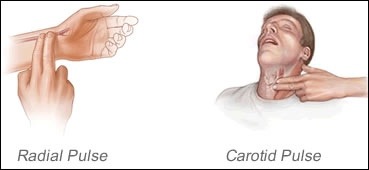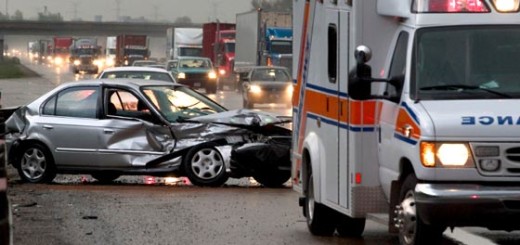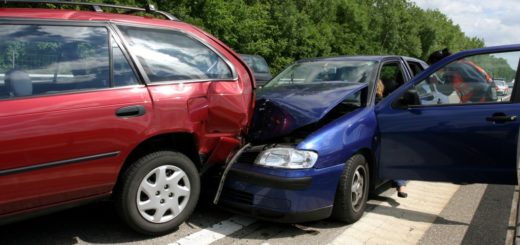The First Aid Classification of Burns
In this blog post we look at the different ways of classifying different burns in first aid. Burns can be classified by their type and depth.
Classifying burns is an important skill for first aiders and first responders to acquire. The type and depth of burn will affect the treatment a burns victim receives.
You can learn more about the correct first aid treatment for burns by reading our free first aid guide to burns.
Types of Burn
- Scald – caused by a hot liquid
Friction – caused by rough surfaces, e.g: carpet
Radiation – eg sunburnElectrical – will have an entry burn and an exit burn
Chemical
- Dry – touching hot objects, e.g: a cooker.
Common Causes of Burns
The following are some of the causes of burns:
- Fire/flame
- Steam or hot liquid
- Hot glass, metal, or other objects
- Abuse
- Radiation
- Chemicals, including gasoline, paint thinner, lye, and strong acids
- Sunlight or other sources of UV radiation
- Electrical currents
Depths of Burn
Depths of Burns are generally categorized by degree depending on how severely they pierce the skin’s surface: first, second, and third. Here in this section, I’ll discuss various depth of burns:
First-Degree Burn
First-degree burns, which are also known as superficial burns, affect the outermost layer of the skin and cause minimal damage to it. The symptoms of it include:
- Pain
- Redness
- Peeling and dry skin as the burn heals
- Swelling or minor inflammation
The signs go away as the skin sheds, and this is because first-degree burns affect the skin’s topmost layer. These burns normally heal in about 7 to 10 days without leaving behind any scarring. If the burn is on a large area of your skin, make sure to visit a doctor.
Pay a visit to your healthcare provider if the burn occurs on your face or on a major joint, such as:
- Spine
- Ankle
- Forearm
- Shoulder
- Foot
- Knee
- Elbow
Second-Degree Burn
Second-degree burns are more serious in comparison to first-degree burns since they damage more than just the skin’s outer layer. They lead to blistered skin, which becomes sore and red. The burns often appear wet since certain blisters end up popping open.
With time, soft, thick, and scab-like tissue could form over the wounded region. Certain second-degree could take over three weeks to heal. However, most of them heal anywhere between two to three weeks. They don’t leave much scarring behind.
The burn could take longer to heal if the blisters are too bad. Make sure to go for emergency medical treatment if the burn affects a bigger area, such as your:
- Face
- Feet
- Hands
- Groin
- Buttocks
Third-Degree Burn
Third-degree burns are the most severe kind of burns as they affect every layer of the skin and cause the maximum amount of damage. However, they are not the most painful. This is because the damage caused is so deep that the nerve damage leads to almost no pain.
The signs of third-degree burns could include:
- Dark brown color
- Leathery and raised skin texture
- White and waxy colored-skin
- Blisters that don’t develop
- Charred skin
Symptoms of Burns
The symptoms of burns could include the following:
- Pain
- Swelling
- Peeling skin
- Blisters that have either ruptured with fluid leaking from them or are intact
- Charred, white, or red skin
- Shock, which includes a decrease in alertness, blue fingernails and lips, weakness, and clammy and pale skin
If you have an airway burn, you could display the following symptoms:
- Wheezing
- Coughing
- Burned mouth and lips
- Changes in the voice
- Burns on the nose hairs, eyebrows, neck, face, and head
- Difficulty breathing
- Black-stained and dark mucus
Treatment for Burns
The treatment for burns varies as per the severity and cause. It’s vital that you keep all the burns clean and apply the dressing and bandages properly based on how severe the wounds are.
When a person suffers a burn, not controlling it adequately can interfere with wound care. Keep checking the wound for infection signs and other issues, such as the skin getting tightened and scarred over the muscles and joints.
Treatments as per the burn type are as follows:
First-Degree Burns
- Don’t apply ice.
- Run cool water over the burned area.
- If you have a sunburn, reach for some aloe vera gel.
- If it’s a thermal burn, apply an antibiotic cream over it and cover it lightly with gauze.
- Take over-the-counter pain medication, if required.
Second-Degree Burns
- The treatment for first and second-degree burns are pretty much similar.
- Keep the burned area elevated in order to reduce swelling and pain.
- You could be prescribed a stronger antibiotic cream by your healthcare provider. It might contain silver, such as silver sulfadiazine, which helps in killing bacteria.
Third-Degree Burns
- Since third-degree burns can be life-threatening, they mostly require skin grafts.
- Skin grafts help in replacing a victim’s damaged tissue with healthy skin. The skin that is transplanted from one area to another is often taken from the areas of the person’s body that have been unaffected by the burn.
- The area from where the skin is transplanted usually heals on its own.
- If in case the victim doesn’t possess enough skin at the time of the treatment, a temporary source of graft is made available from an artificial source or through a deceased donor.
- The temporary source, however, requires to be eventually replaced by the victim’s own skin.
- Treatment for a third-degree burn can also involve extra fluids taken through an IV as they help in preventing dehydration and shock and also keep the blood pressure steady.
If you suffer a minor burn, you can take the following steps to treat it:
- Cool the burn by holding the burned area under cool running water. Alternatively, you can apply a cool and wet compress until the pain abates a bit. Make sure to never apply ice directly on the burn as it could damage the tissue even further.
- Once you suffer a burn, get rid of all your rings and whatever tight items you have on your body. Do this gently and quickly before there is swelling on the burned area.
- Once the burned area has cooled down, apply a lotion with aloe vera gel over it. You can also use a moisturizer. Doing this will prevent the area from drying up.
- Don’t poke the blisters or try to break them. A blister that is filled with fluids protects the victim from infections, and if it breaks, you can use water to clean the area. Apply an antibiotic ointment, which is something you should stop using if you see a rash on the burned region.
- Use a sterile gauze bandage to keep the burn covered and wrap it around the area loosely without applying pressure. This helps in reducing the pain, keeping air off the area, and protecting the blistered skin.
- Take over-the-counter medications, such as ibuprofen.
- Ensure that you’re up to date with your tetanus shot.
FAQs
How can burns be prevented?
Some of the ways to prevent a burn include wearing sunscreen, covering up all the electrical outlets, always testing the temperature of the water before taking a shower, keeping fire extinguishers in your home, installing smoke detectors, keeping your child away from hot objects, and keeping all the matches, lighters, and chemicals locked up.
What is the definition of a burn?
A burn can be defined as an injury to a person’s skin or other organic tissue, which is caused mainly due to radiation or heat, friction, electricity, or coming in contact with chemicals.
What are the classifications for burns?
Burns are classified as first-degree, second-degree, and third-degree burns.
Why are burns so painful?
The reason burns are painful is because a person’s nerve endings get damaged when they get burned, which causes extreme pain.
Conclusion
Burns happen by accident, and older adults and children are often at high risk when it comes to suffering burns. If deep burns are involved, they require proper treatment so as to prevent scarring and infections.
The most serious type of burns are third-degree burns, as they can be life-threatening. First-degree and second-degree burns, however, cause more pain. Victims require physical and occupational therapy while recovering from third-degree burns in order to improve function and maintain the mobility of their joints.
If you or someone around you is suffering from a blistering burn, make sure to get medical attention right away. Also, have a word with your healthcare provider about how you can reduce your risk of accidental burns.
Want to learn more about first aid? Have a go at one of our free online first aid courses.






